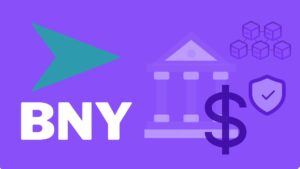TL;DR
- Ethereum Foundation sets a 12-month clock to roll out an optional Layer 1 zkEVM client, initially on a pilot group of validators and gradually shifting mainnet from transaction replay to proof verification.
- “Real-time proving” goals demand 99% of blocks verified within 10 seconds, 128-bit security, ≤300 KiB proof size, and operation on <$100K commodity hardware under 10 kW power.
- Adoption will be driven by formal verification grants, expanded bug bounties, and dedicated security teams, with proof-checking ultimately becoming mandatory to unlock higher throughput, lower costs, and enhanced ZK privacy features.
Ethereum‘s main developers have created an ambitious plan to integrate zero-knowledge proofs into the base layer. Building on Sophia Gold’s “Realtime Proving” proposal, the Ethereum Foundation aims to launch an optional Layer 1 zkEVM client within a year, setting the stage for a network-wide upgrade that replaces block re-execution with compact cryptographic receipts. Here’s how the plan unfolds and what it means for validators, developers, and the broader ecosystem.
A One-Year Countdown to zkEVM Mainnet Debut
The Ethereum Foundation has set a 12-month timeline to introduce zkEVM capabilities on the mainnet. Phase one will allow a limited group of validators to run specialized ZK clients alongside existing software. As confidence builds, backed by audits, formal verification, and bug bounties, the network will gradually raise the gas limit to shift from transaction replay to proof verification by default. Stakeholders anticipate a gradual transition that balances innovation with system stability.
Defining Real-Time zk-Proof Standards

At the heart of the roadmap lies a rigorous performance benchmark dubbed “real-time proving.” Proofs must verify 99% of blocks within 10 seconds, uphold at least 128-bit security, compress under 300 KiB, and run on commodity hardware costing no more than $100,000 with under 10 kW of power.
Sophia Gold has challenged zkVM teams to hit these targets by Devconnect Argentina, igniting a “race to real-time” that could position Ethereum as the world’s largest live ZK application.
Validator Adoption and Security Incentives
Early validator buy-in is critical. To speed adoption, the Foundation plans to offer formal verification grants, expanded bug bounties, and community-driven code reviews.
Only a small cohort will initially run zkEVM clients, but ecosystem support, through dedicated “One Trillion Security” teams and streamlined protocol development, should encourage more nodes to join. Over time, proof-checking could become mandatory, unlocking higher throughput and reducing computational costs for the entire network.
Unlocking Ethereum’s zk-Friendly Future
Beyond scaling, native zk-proofs promise enhanced privacy, signature aggregation, and richer smart-contract capabilities. Once validators can verify multiple independent ZK proofs instead of re-executing transactions, Ethereum will pave the way for on-chain confidential data handling and advanced L2 rollups.









